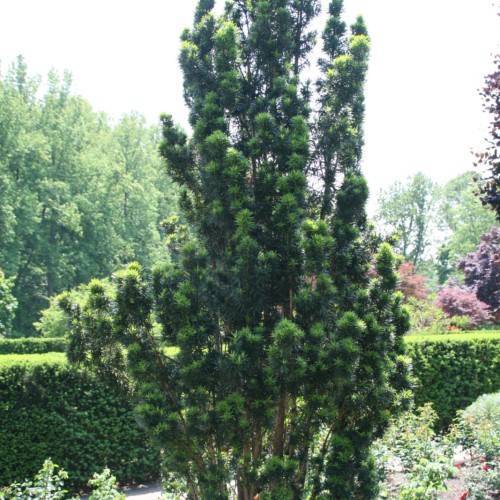
yew
Taxus media 'Flushing'
Cycle:
Perennial
Watering:
Average
Hardiness Zone:
4 - 7
Flowers:
Flowers
Sun:
Full sun,part shade
Cones:
Yes
Leaf:
Yes
Growth Rate:
Low
Maintenance:
Low
Poisonous To Humans:
Yes
Poisonous To Pets:
Yes
Drought Tolerant:
Yes
Salt Tolerant:
Yes
Thorny:
Yes
Care Level:
Medium
watering
Watering: The Yew (Taxus media ‘Flushing’) should be watered regularly, approximately once a week or as needed to prevent the soil from becoming overly dry. When watering, saturate the soil until the excess runs out of the drainage holes in the bottom of the pot. Make sure not to leave water in the pot if it is not draining. After each watering, allow the soil to dry out to a depth of about 2-3 inches before giving it more. Yew does not like to be waterlogged, so make sure it is only watered when the soil becomes dry. During the summer when the weather is hot and dry, the plant will need to be watered more frequently. Over-watering can be potentially fatal to a Yew, so stick to watering only when the soil is dry.
sunlight
Yew (Taxus Media 'Flushing') should receive 4-6 hours of direct sunlight per day. This amount of light is important to ensure that the yew stays healthy and vigorous. Yew is not a particularly sun-loving species, so it’s best to plant it in a partially shaded area of your garden. Morning sunlight is the best for yew, as the afternoon sun can be too intense. Avoid planting it in full sun all day, as this can cause the yew to become sunburned and lead to leaf damage. As a general guideline, the yew should receive the most direct sunlight from about 10:00 am to 2:00 pm daily.
pruning
Yew (Taxus media 'Flushing') is a species of evergreen tree that should be pruned twice per year - once in late winter/early spring (February to March) and once again in late summer (August to September). In late winter/early spring, it is important to prune out any dead or diseased branches in order to maintain the health of the tree. Additionally, this is a good time trim the tree back slightly if it has gotten too overgrown. It is important not to prune too aggressively at this time, however, as it will delay the flowers and fruits that yew produces in the early summer. In late summer, it is important to prune the new growth back in order to encourage a denser, more compact habit. Aim to prune back about 1/3 of the growth, making sure to prune back to a bud facing outwards. This will help to keep the yew shrub full and ensure that it produces the maximum amount of flowers and fruit in the following year. In general, the goal when pruning yew should be to maintain its overall shape and structure, while controlling the growth of certain branches. It is important to avoid pruning later in the season, as this will reduce the amount of flowers and fruit that the yew produces in the following year.
